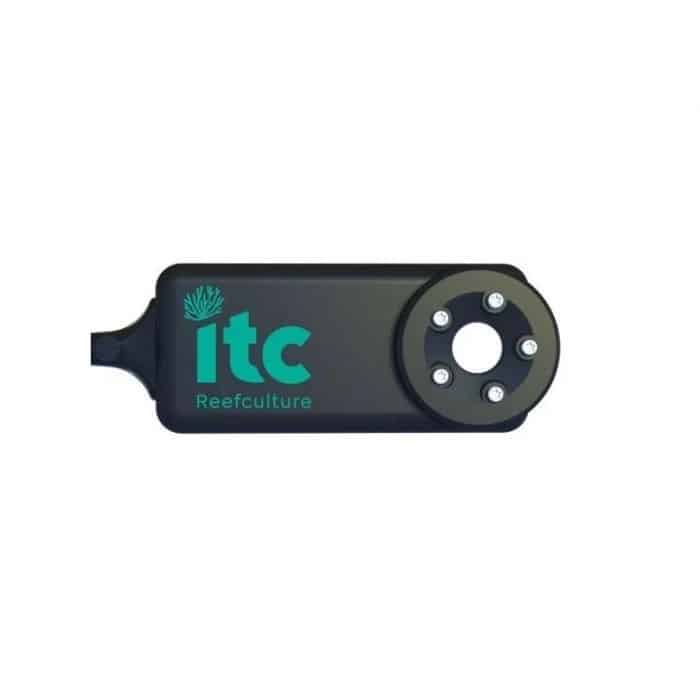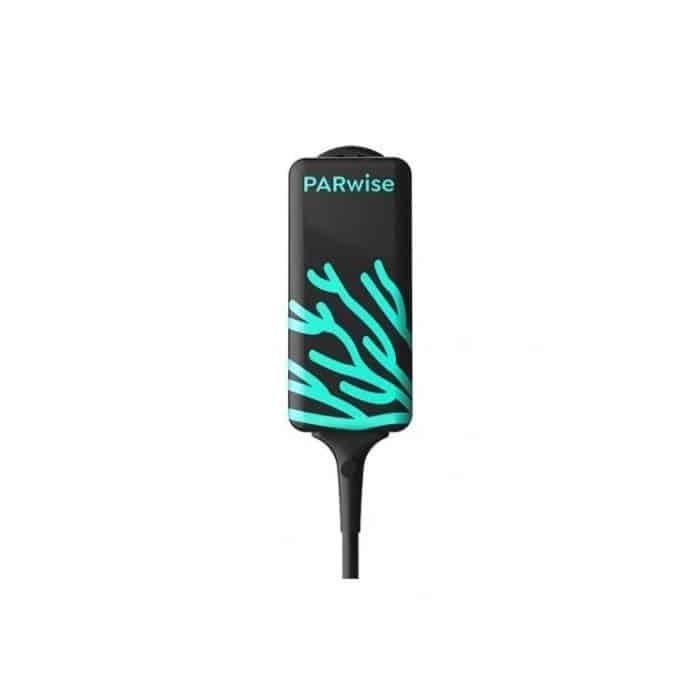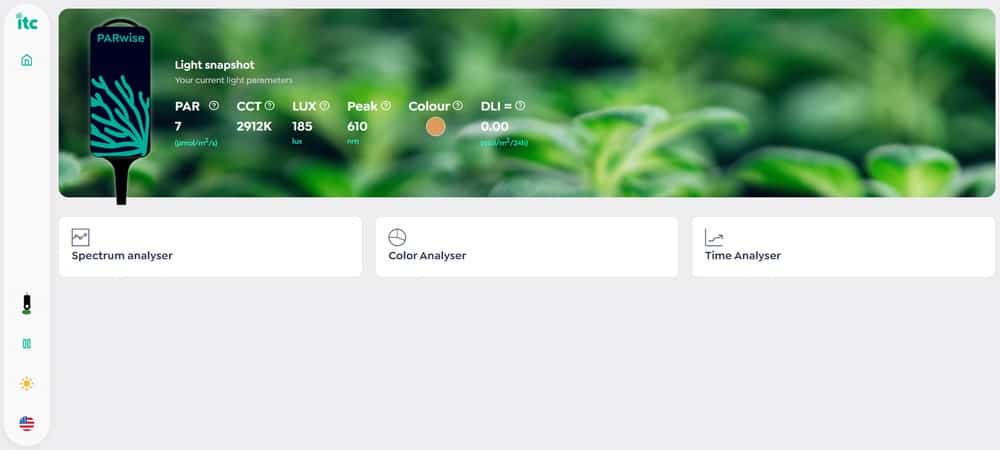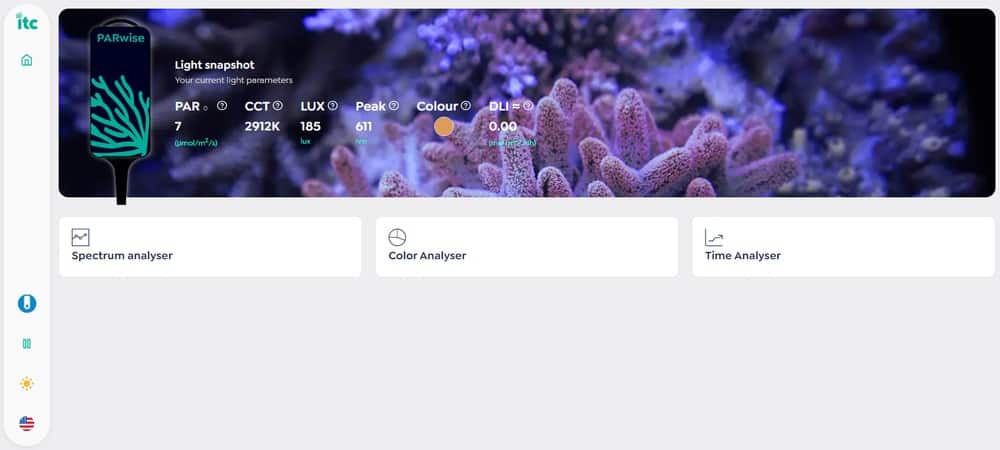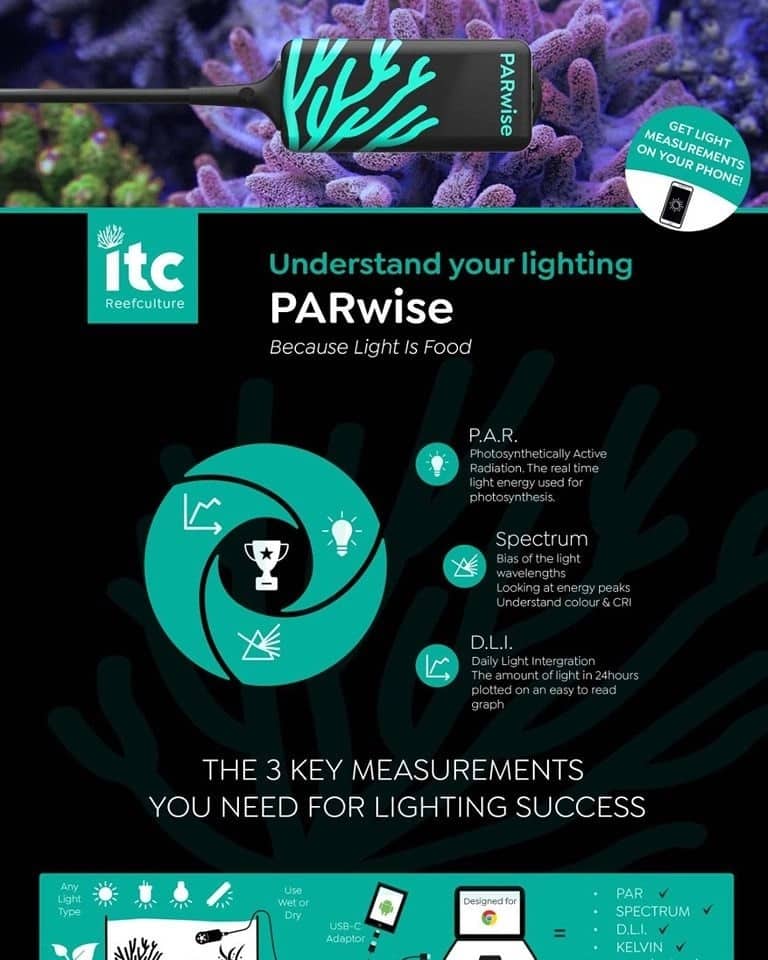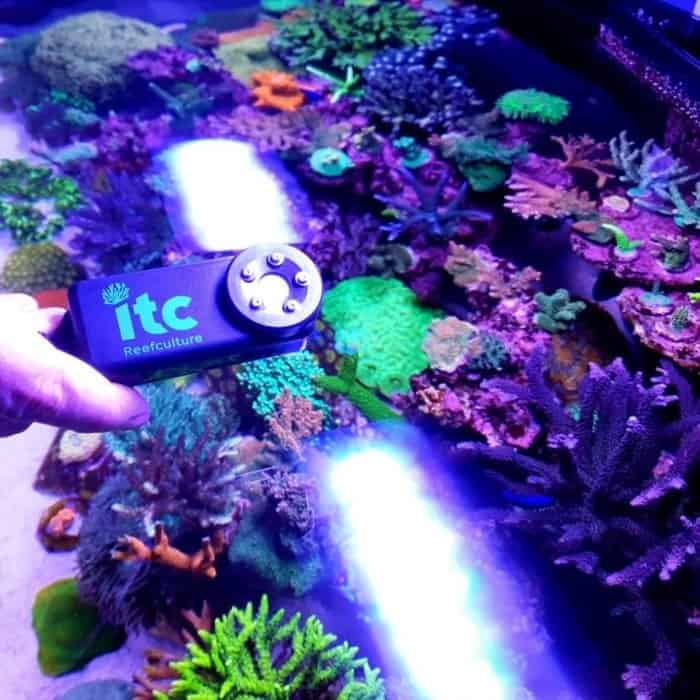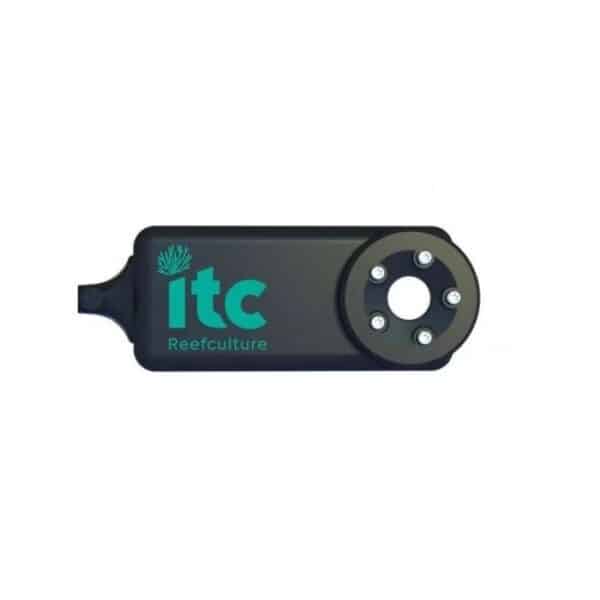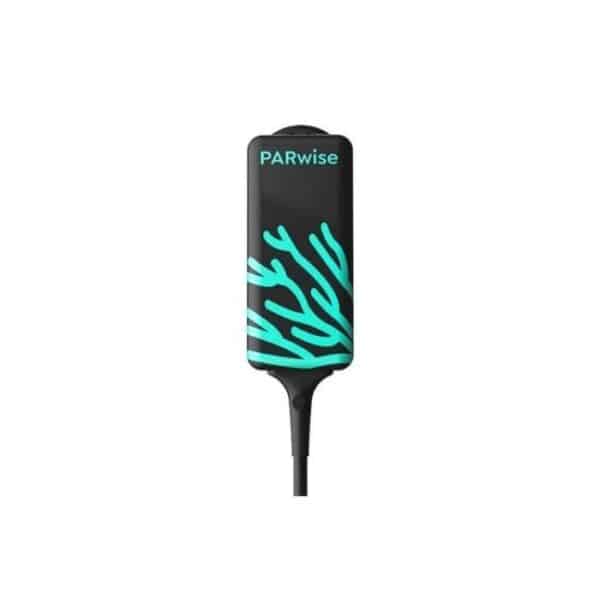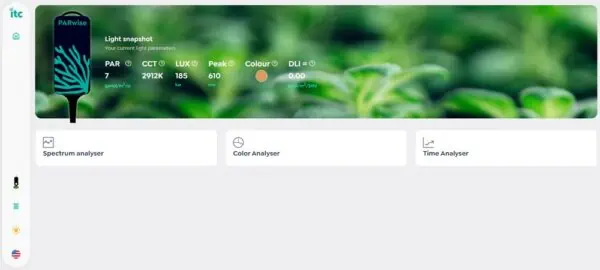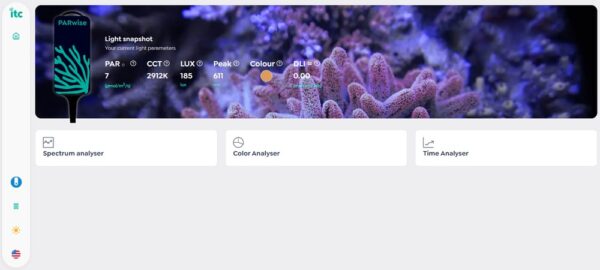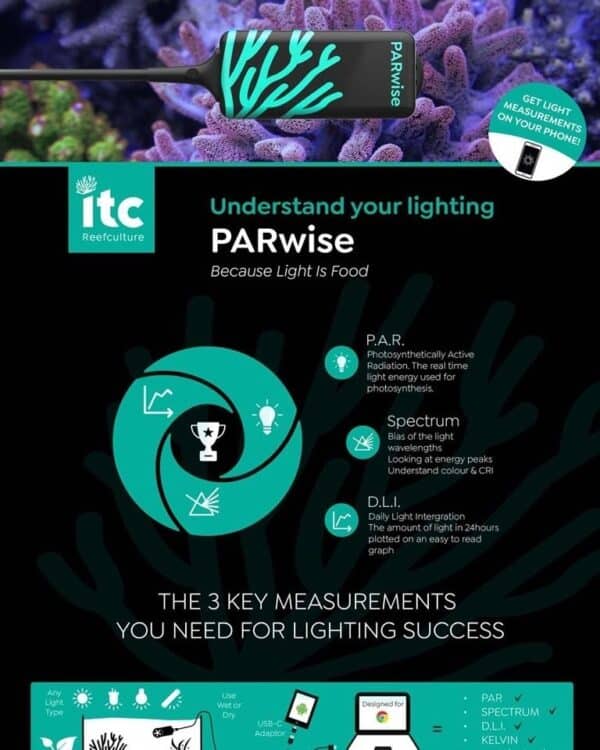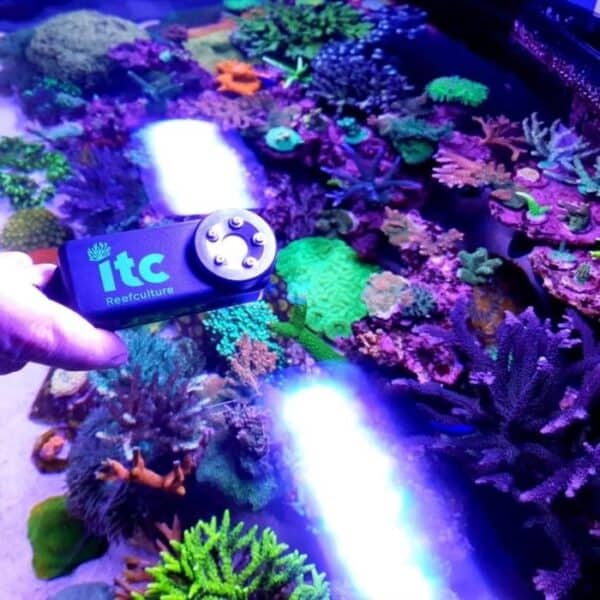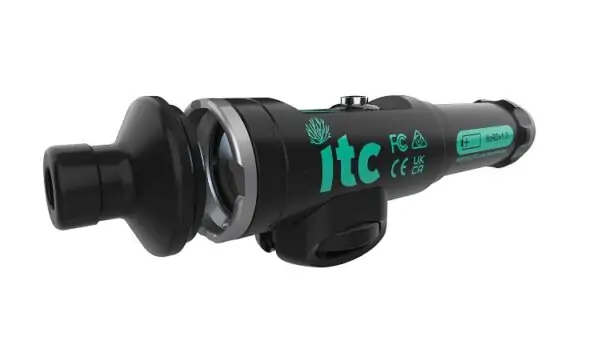ITC PARwise – Light measuring
€242,95
ITC PARwise is a unique light meter with the ability to measure spectrum (doesn’t work on iPhone & iPad)
Out of stock
ITC PARwise – Light measuring (does not work on iPhone & iPad)
Understand your lighting
ITC Reefculture was established with a passion for creating unique and functional tools for aquarists of all experience levels. Our tools and accessories are designed to help you maintain your aquariums and care for their inhabitants more effectively. The welfare of aquatic life is at the heart of our mission, whether it involves creating tools for spawning corals, fragging them, or eliminating pests! Our latest offering, PARSwise, addresses common questions about lighting settings, covering aspects such as brightness, color spectrum, and photoperiod. PARSwise empowers you to confidently make informed decisions about your lighting settings and facilitates in-depth discussions about lighting within the aquatic community, accurately addressing both aquatic organisms and beyond!
What is it?
PARSwise is a one-of-a-kind light meter capable of measuring spectrum. It is versatile for use both underwater and in the air, providing all the essential lighting measurements you need to make well-informed decisions.
What does it measure?
- PARSwise measures ‘PAR’ (PPFD – Photosynthetic Photon Flux Density µMol/m2/s)
- Kelvin (Color temperature)
- LUX
- Spectrum
- DLI (Daily Light Integral)
- Peak Wavelength
- Hue (color)
How does it work?
PARSwise employs our proprietary optical engine, designed in-house, positioned beneath a user-replaceable cosine corrector to accurately read the spectral content and intensity of light hitting it. The results are processed on-board within PARSwise and transmitted via USB to your device for display. Our web-based app automatically downloads to your device (PC, Mac, Android) the first time you use it, enabling full offline functionality. We provide a complimentary USB-C adapter for Android smartphones, tablets, and modern computers lacking full-size USB ports. Please keep in mind that we do not yet support iOS or iPadOS due to Apple’s restrictions on USB OTG on their mobile devices.
How to use?
Simply follow the user instructions to get your PARSwise operational. Then, position the sensor next to your photosynthetic organism, such as a coral or plant, to take a reading. Use the on-screen pause button to capture the reading at that position and compare your spectrum against a known spectral response curve or another light setting you wish to replicate or adjust.
What languages are available?
Our web app currently supports English, French, German, Dutch, Italian, and Portuguese.
Technical Specification
| Specification | |
|---|---|
| PAR Range | 0-6000 µMol/m2/s |
| Kelvin | 1000-10,000 Kelvin |
| LUX | 2-300000 |
| Spectrum | 380-800nm |
| Optical Measurement Type | Point light source |
| Accepted light sources | Natural, LED, Fluorescent, Incandescent, Gas Vapour, HID |
| Measurement repeatability | < 0.5% |
| Calibration Uncertainty | +- 5% |
| Directional cosine corrector | Replaceable |
| Temperature response | Auto compensating |
| Ingress Protection Rating | IP68 |
| Dimensions | 85x40x20mm |
| Device Weight | 130g |
| Outer Package Dimensions | 24.5x 15.5×5.5 cm |
| Packaged Weight | 215g |
Frequently Asked Questions
Why would I want one?
Humans do not perceive color and intensity accurately – this is a fact of human evolution, as our eyes have adapted to see across various light levels. Consequently, when setting up artificial lights, we typically adjust them to what we prefer to see, rather than what is biologically optimal for corals or plants. This often results in wasted energy on unnecessary parts of the spectrum while failing to provide the essential light that corals need, leading to lower health and growth rates. To achieve success, three key factors are necessary: the correct spectrum, the right amount of light, and the appropriate duration of exposure.
How does it work?
PARSwise connects to your mobile device or laptop/computer through our web app. You can position the sensor within the aquarium at various points and depths, record the readings and their corresponding positions, and gradually build a comprehensive picture of your light settings. You can then reference published data and our website to discover ways to enhance your setup.
Is it just a PAR meter?
No! We measure the three essential factors needed to successfully provide light to your photosynthetic tank inhabitants: Quantity of Light, Spectrum, and Duration of Exposure. No conventional PAR meter can accomplish this – but PARSwise can. We chose the name PARSwise because many people are familiar with that term. Now, you can consider yourself more informed! We also hope that as hobbyists, we can all start sharing spectrums and photoperiods (DLI), along with PAR data, to truly maximize the growth potential of our aquatic life. Remember, PAR alone means little without considering spectrum and photoperiod (DLI). You may have 500 PAR, but if the spectrum is off, your organism will not be able to utilize much of it.
Is it full spectrum?
The term “full spectrum” can be somewhat misleading. Do we start measuring from 0nm all the way to what wavelength? There is always a specific operational range. However, in terms of the full human-visible spectrum, yes, we measure all of it, including UV and Infrared as well. We are capable of measuring more than just PAR.
How can I learn more about lighting terminology and its relevance to my tank?
There are many excellent articles available online, but we are also developing a lighting library on the PARwise website. We hope this resource will be valuable for aquarists and enthusiasts alike.
Will it match my Apogee or other meters like Seneye Reef?
Which Apogee are you referring to? There are numerous models, and they all yield different results for valid reasons. Each sensor has a defined operational range, and within that range, there are specific points at which it is more sensitive. Apogee sensors are not “smart”; they have a fixed sensitivity range and cannot filter out certain parts of the spectrum. Some models inaccurately include near-UV in their PAR readings, which technically should not be part of the PAR range. Since PARSwise can perceive spectrum, we can effectively disregard the segments of the spectrum that do not conform to the scientific definition of that measurement, ensuring a more accurate and reliable reading. Seneye Reef features a basic light meter, but it was never designed with that as its primary function. It serves well for indicative use, but its core design and engineering focus on protecting fish.
Why does it not have a domed lens?
PARSwise uses a true scientific-grade cosine correction material. Historically, manufacturers have attempted to create inexpensive lenses to refocus light onto the sensor, resulting in poor efficiency. The performance of a genuine scientific cosine corrector is significantly better at collecting off-axis light from reflections or multiple emission sources aimed at the same target. Although cosine correction is not crucial for aquarium use, it was essential for PARSwise as it has applications beyond aquatics. Like any optical lens, it must be kept clean; however, the cosine material is crafted from a low surface energy polymer, preventing quick fouling. The cosine lens of PARSwise is also replaceable.
Can it work underwater?
Absolutely! PARSwise functions accurately both underwater and above water, thanks to a special software switch in the web app that allows you to select between air, underwater, saltwater, and freshwater. Believe it or not, the calibrations differ for each of these conditions due to variations in diffraction and dissolved minerals/organics.
How deep can it work?
The cable length is 2.5 meters from the sensor to the plug, which is not waterproof, even though your PARSwise is! So realistically, it can be used nearly as deep as that!
Will it work on iOS products (iPhone & iPad)?
Not at this moment. The reason is that Apple does not allow USB OTG on their phones and tablets. However, it is completely compatible with macOS, so if you own a desktop Mac or MacBook, you are all set. We hope that once Apple transitions fully to USB-C on their mobile devices, they will enable this feature. Unfortunately, they do not allow it currently, while nearly every other mobile device manufacturer does. If you find yourself in a pinch, you can purchase an Amazon Kindle Fire 7, which is quite affordable and still provides you with a cool little tablet, all for significantly less than the cost of a single-parameter light meter from other manufacturers.
Will it work on MAC?
YES!
Why do I need an adapter?
The included free USB-C adapter is provided so you can connect PARSwise to a range of both old and new devices, from computers to phones.
Why does it run only in Chrome & Edge?
It operates on any ‘Chromium’ based browser, including Amazon Silk for Kindle owners. This approach allows us to deliver updates to your device and software quickly and easily. It is a fantastic technology that means there is only one app needed to work across a wide array of devices.
Can I use it for my own application?
If it involves measuring light in air or liquid, it will work. Just ensure that the liquid is not a harmful chemical! If anyone has specific commercial applications in mind, please reach out to us at Support@itcreefculture.com, and we will be happy to provide tailored advice.
How do I get the latest software?
By logging into the web app with your device connected to the internet, our site will check for the latest version of the web app and firmware for your device, providing you with any necessary upgrade notifications.
| Weight | 2 kg |
|---|
Brand
ITC Reefculture
You may also like…
UV sterilizer

